HIStalk Interviews Michael Barbouche, Founder and CEO, Forward Health Group
Michael Barbouche is founder and CEO of Forward Health Group of Madison, WI.
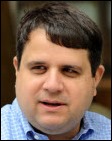
Tell me about yourself and the company.
I am a math guy by training. I studied algebra. Then I had the good fortune of stumbling into health services research as formal training. I’m married to a general internist. We have three great kids, and following my lovely wife around through training, I had a very Forrest Gump-like journey that took me through all sorts of different places with healthcare data.
The company was established formally in 2009. We are a population health measurement group based in Madison. We help get the good, fresh data to flow.
A lot of companies offer population health management and analytics tools, some of them brand new. How do you differentiate yourself from competitors?
We didn’t set out to start a population health company. We ended up solving a riddle going back to 2004. Our team came together and we took on one of these longstanding challenges that plagues the healthcare world. Namely, how to measure apples to apples performance looking at outcomes. System to system, platform to platform.
If you go back to 2004, we didn’t have HIEs. We didn’t really have widespread EHR adoption. We didn’t talk about that stuff. But the perspective of employers and purchasers and payers was the same. They needed to get to some kind of new way of measurement.
Our team developed that for a group called the Wisconsin Collaborative for Healthcare Quality. That led to a whole series of very interesting conversations. A bunch of people that came and knocked on the door in ’06 and ’07 and ’08 saying, we need to extend this, why don’t we take this into practices? We weren’t reluctant to set up a company. We solved the riddle first on how to get to the data. Then we figured out, we’d better make this into a service and into a solution that can be widely adapted and broadly spread to help get clean data in the hands of all sorts of stakeholders, not just practices, but researchers, payers, and everybody in between.
Where do you get the data and how do you get it into a form that makes it that usable?
The data’s a mess. I mean, it’s a horrible, bloody mess. It’s bad out there and it’s all over the place. The data sources are varied. They’re ever moving, they’re ever shifting. Really what we are is a company that builds good denominators. Not very sexy, not probably a great conversation starter, but that’s we do. We figured out in ’04 and what we’ve really been working on ever since is to get the data to align and to kind of flow in a good direction, we need to begin by building sound denominators.
That means we have to work on tricky things like attributions. We have to work on all sorts of messy stuff with the data that doesn’t come forward very clean and very clear. It also means that we have to look at every potential data source. It’s not just an EHR connection or a lab interface or what have you. Most health systems have multiple versions of all of those and some practice management systems and some legacy things to boot. We build a custom strategy to find the most sustainable way to get data every place we go.
Do you think people underestimate the challenge not just collecting data in one place, but trying to make sense of data that is inconsistent and possibly not even reliable?
Oh, heck yeah. There have been so many people my entire career, 25 years now, that have talked about building this giant vacuum cleaner in the sky that sucks up all the data and it’s just going to magically appear. But, you know, we all know now very well that healthcare has this very painful metadata problem. It doesn’t know how to build data about itself. I think all of our careers will be over before anybody actually knows what a clinical FTE actually is in a practice. It’s really hard to things like attribution. There’s no right answer.
But if you try to suck up all this data into a giant vat and then make sense of it and distill it down, when you put it in front of somebody like my wife, you’re not going to get anywhere. That’s one of the litmus tests that we set out to kind of solve, that you have to be able to have all stakeholders look at the data and go, "Yeah, all right, yeah, we’ve got to improve." And there’s a real important credibility lift there that says the data is quite custom, it’s quite local, it’s quite turbulent. We need to really understand that and go for that.
Tell me what The Guideline Advantage is and what you’re doing with them.
That’s a spectacular program, and we’re really honored to be part of it. This is a tri-agency led by American Heart Association, American Cancer Society, American Diabetes Association. We didn’t set out to become their partner. They had a data problem. They followed a traditional registry model for getting data, and then they stumbled into us. We were delivering data for one of our clients, total population, total denominator. All of a sudden, that magical, “how do we get the data out of EHR?”
The program is really focused on primary prevention and looking at the role of the inventory side, saying that chronic disease is something that we can tackle head on. With our platform, PopulationManager, we are now looking at practices across the country to get them in synch with the guidelines developed by these three great organizations, and then talking to one another and collaborating so they can begin to move things forward together. The goal is very simple — to raise all boats. We’ve put spirit behind the Wisconsin Collaborative Initiative that we’re a part of, and it remains the same here with The Guideline Advantage program.
Who is your typical prospect or customer?
We work with health systems. We work with physician groups and hospitals. We work with payers. We work with researchers. Everybody really needs to become a consumer of this data. This is what we’re all after.
There are two pots of data out there. There’s administrative data, and we’ve been working on that for forever. And now there’s all this clinical results stuff. Everyone’s figuring out, oh yeah, that clinical results stuff, that’s where outcomes comes from. So to the degree that a stakeholder has an interest in seeing outcomes move in the right direction, this is the foundation of value-based fill-in-the-blank or anything else you want to put as a label, you’re going to need that clinical result data.
When you look market by market across the country, some will be payer-led. It has to be that way. Others will be health system or provider led. The Guideline Advantage is a third-party group that has a very strong research and reporting mission. We work with any kind of group that needs to get into the business of having good, clean, fresh data.
Describe what hospitals might do differently having implemented PopulationManager.
First, let’s just talk about the burden on IT. The limited resource in every one of your reader’s systems are their shaggy-haired, headphone-wearing data analysts. You just can’t hire enough of them. We learned back in ’04 and ’05 that that resource couldn’t be tapped in an unlimited manner. Instead, they had to find a way to get at data that was already there, that was essentially rotting in place, and figure out a way to maximize it. We put together a good harvesting strategy and system that within six months, IT becomes our very best friend because we remove the tremendous burden on their part of ad hoc reports and trying to keep pace.
But more than that, we’ve flooded the system with a tremendous amount of actionable data that’s in the hands of their docs, clinic managers, schedulers, nurses, and a whole lot of other folks in between. We want the install to be very fast and very much a light lift to the entire organization. We have to get it done in about 8 to 12 weeks, because the data in their world is ever shifting, it’s on sand, it’s always moving. What they have to measure is ever shifting. If we stood around and said, well, it’ll take six months or a year, every assumption we had made would already be busted. We have to go quick, and we have to hand them essentially their data back in a way that is very intuitive and very easy to understand.
A lot of times in healthcare specifically you can make a set of data look decent enough, but future data may not follow the rules. Do you find that you have to do ongoing maintenance to keep the data clean?
More than that. We have this construct that we call a data refresh.The customer selects the cycle, let’s just say quarterly. On a quarterly basis, we act like we’ve never been there, and every assumption, every mapping, and every kind of transformation we’ve done has been busted. Because most of the time, it has been.
We have to essentially take the data through that process once a quarter and make sure that all of the links are live. We can’t publish data out on our visualization platform and have 28 percent of the blood pressures all of a sudden just go missing. It happens. It’s not because they didn’t deliver the care, it’s because the data got moved or there’s a new interface or what have you. That burden falls to us, as the measurement partner, to make sure we find those hiccups before they occur.
If I’m a patient of a health system that’s implemented PopulationManager, what do I see different in my care?
We set out to deliver tools that are like a mirror, a mirror of performance across the system or across the health plan. Our clients are pushing the boundaries of taking the data that we deliver and really saying, we need to make this patient facing. We don’t have a patient portal, but we’re now positioning the data — which isn’t our data, by the way, it’s our client’s data — in a position where they can begin to leverage it.
I’ll give you a quick example. We have this very simple scatter plot that’s so intuitive it just drops off the page. But if you plot that out and you select the colors and you select the shapes, when you look at all of the crazy dots on the screen, there are patients that stand out immediately. We’ve had some of our medical directors at our site say, I need to show this to my patients who are outliers so they know when I’m saying, “Look, buddy, it’s you” they can really see on the screen they’re the ones that are standing out. There’s a huge frontier of patient reported data and all this other stuff that needs to come into the mix. We look at that quite simply as just another very rich data source that’ll have to be brought into the mix.
Do data projects take into account that what looks like a good set of data today could be not-so-good set of data a month from now?
Their data is ever moving, ever shifting. They’re doing upgrades and they’re adding on new locations and there’s new devices. But then what they’re measuring is always shifting as well. You have these two continual states of flux that are absolute, and I don’t know how we’re ever going to change those. We had to build the bridge in between that said, we know that your stuff’s ever moving and we know what people want from you is ever shifting. Let’s split that balance in between.
It’s very difficult for the health system, for the hospital, to deploy their resources, to go to all the meetings and figure out, these are our clinical priorities, these are our financial priorities, and we need to map those into the world of our data. There’s just too movement there. We’re a denominator company. We say, all right, what are our focus areas now, and, oh, you’re going to change now? Well, OK, great. At the next refresh, let’s blow away all of your existing measures and put in new ones. There’s nothing rigid or fixed in our approach, because the systems don’t have that ability. We have to meet them where they are, which is in a very, very constant state of flux right now.
Where do you see the company moving in the next several years?
What inspires all of us, our team and everything else, is it’s working. Our sites inspire the heck out of us. They’re moving the needle in the right direction. There are tremendous opportunities in all areas of care. Some of the work I think we’re the most proud of is behavioral health and HIV, which you don’t find much stickier or thornier data than that. But to see the innovations that are coming from the practices. Not because we have done anything magical. We’ve just given them access to their data and we give it to them in a way that’s very intuitive, it’s very clean, and it’s accurate. Where they’re going with it, I think that’s the real potential.
For the company itself, we’re on a great run. We’ve got great partnerships and we’ve got good momentum going. What we need to do is continue to get rich data as well, and put that in the hands of more and more practices. There is a secondary opportunity out there that we’ll certainly have to address, which is mainly what to do with all that rich data, because there are wonderful, important answers for research, for the financing of healthcare, in the collected data. When you get it clean, when you get it accurate, and it’s apples to apples, you can answer some pretty powerful questions.
Any concluding thoughts?
I just want to say, as many do, that I very much appreciate what you do. Your site is wonderful. I’d also really like to give a shout-out to my great team. Without them, I wouldn’t be here. The work and the dedication that they’ve done through these years as a little bootstrap company means the world to me. They are a great group, and I’m very honored to be their CEO.






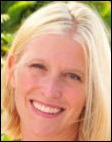
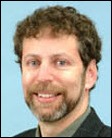
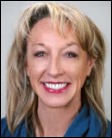
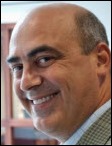
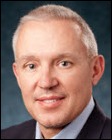
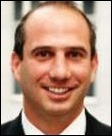
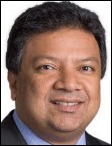
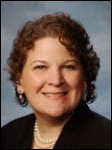
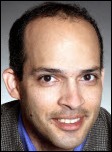

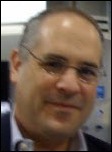

















































































Is this HIStalk or Reddit? Hard to tell the difference with the comments being posted.